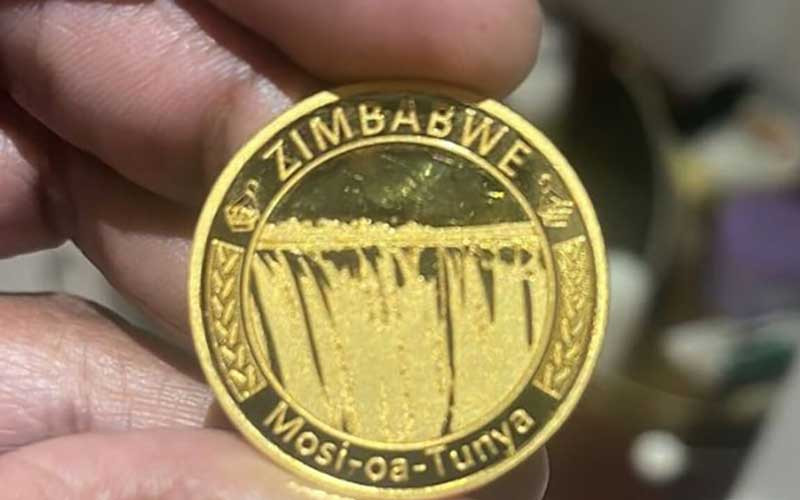
GOVERNMENT says gold coins introduced in July this year have mopped up close to $10 billion from the parallel market.
This comes as President Emmerson Mnangagwa claimed that Zimbabweans have an appetite for gold coins, hence government will introduce smaller coins next month.
“The Reserve Bank of Zimbabwe (RBZ) has sold over 10 000 gold coins for about US$15 million. This means Zimbabweans have an appetite for gold coins and to save. Our target is to release US$30 million worth of coins.
“By mid-November this year, the RBZ should be in a position to unveil smaller denominations of gold coins, whose value will range from a tenth, a quarter, to half of an ounce,” Mnangagwa said in his weekly column in the State media.
Analysts, however, say the introduction of smaller gold coins will not assist the country’s economy to grow as government needs to support the ailing productive sector more to achieve economic growth.
Analyst Effie Ncube said while gold coins might temporarily slow down inflation and reduce pressure on the exchange rate, they would not address the economic crisis in the country.
“The introduction of smaller denominations of gold coins is not going to address the economic crisis in the country. There is need for more holistic and comprehensive measures to turn around the ailing economy,” Ncube said.
Finance ministry spokesperson Clive Mpambela said the gold coins were effective in stabilising the exchange market.
- Mbavara eyes to resurrect Matavire’s music legacy
- Bodies ‘rotting’ at UBH
- SOS for slain Elvis Nyathi’s children
- Bulawayo water woes persist despite rains
Keep Reading
“The gold coins were effective in the sense that they removed about $9,7 billion from the market which probably would have ended up chasing foreign currency. The small coins will be half an ounce or a quarter of an ounce,” Mphambela said.
“The impact of removing $10 billion is equivalent to removing close to $100 billion of purchasing power which would otherwise be chasing foreign exchange. That $10 billion is equivalent to between $70 billion and $100 billion on a velocity basis. Indeed, the gold coins have contributed a lot to the stabilisation of the exchange rate.
“If you think about the circulation of $10 billion in the economy, it has a multiplying effect. The gold coins, therefore, immunised or sterilised that money. That, therefore, stabilised the exchange rate in addition to other initiatives by the government including the value for money initiative,” he added.
Economist Persistence Gwanyanya said in the face of increased instability, gold coins were a viable alternative to restore the value of local currency.
“The timing of the issuance of these smaller denominations is important as it coincides with increased local currency liquidity from bonus payments. This will address the concern that the product was designed for the elite,” Gwanyanya said.
Another economist Busisa Moyo said: “Zimbabwe is an underrated leader in this transformational change. Gold provides an alternative store of value to reserve currencies such as the United States dollar which have been volatile of late.”
Mnangagwa’s government took an unprecedented step of introducing gold coins as legal tender after inflation spiked from 191% in June to 257% in July this year.
- Follow us on Twitter @NewsDayZimbabwe










